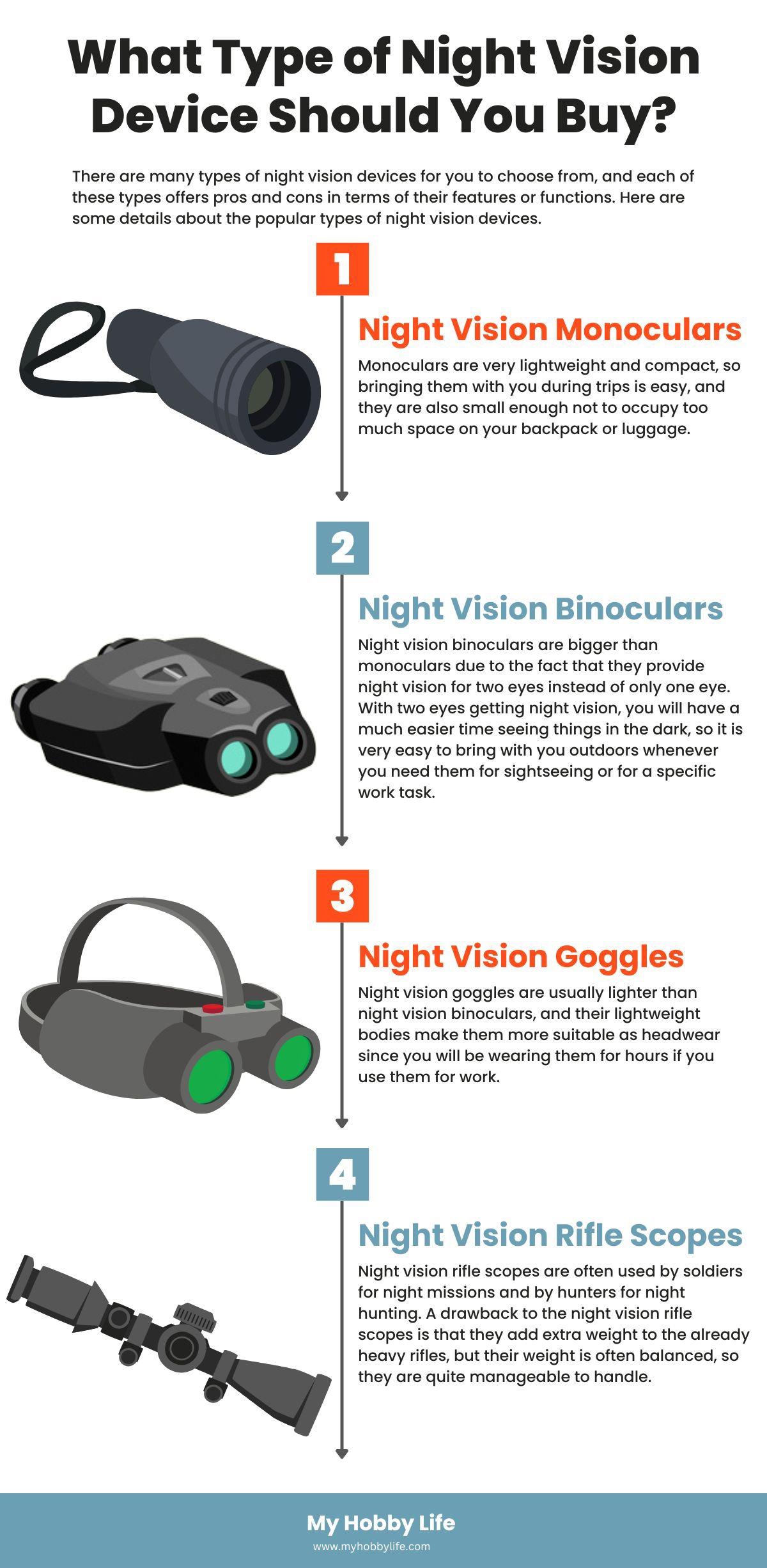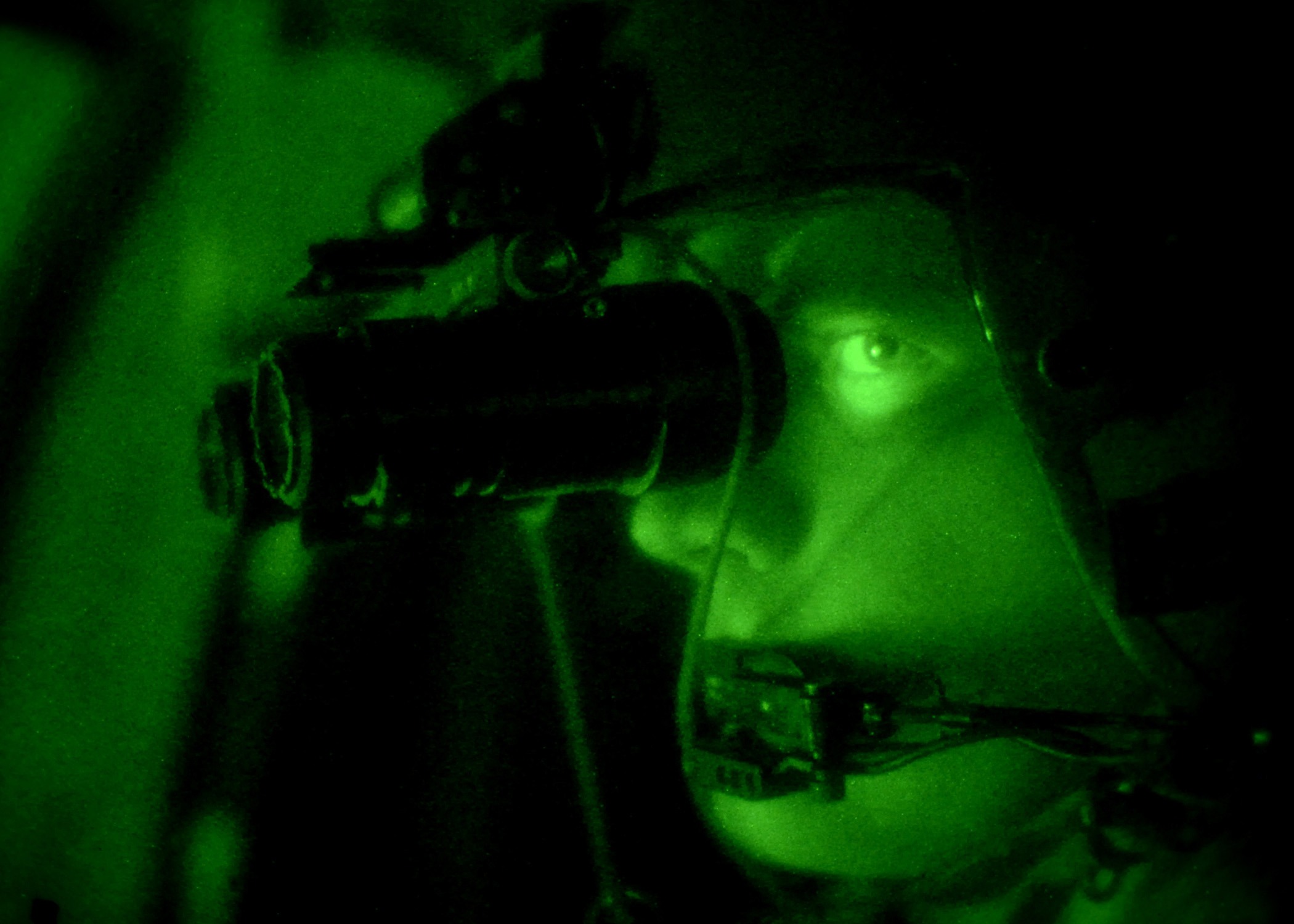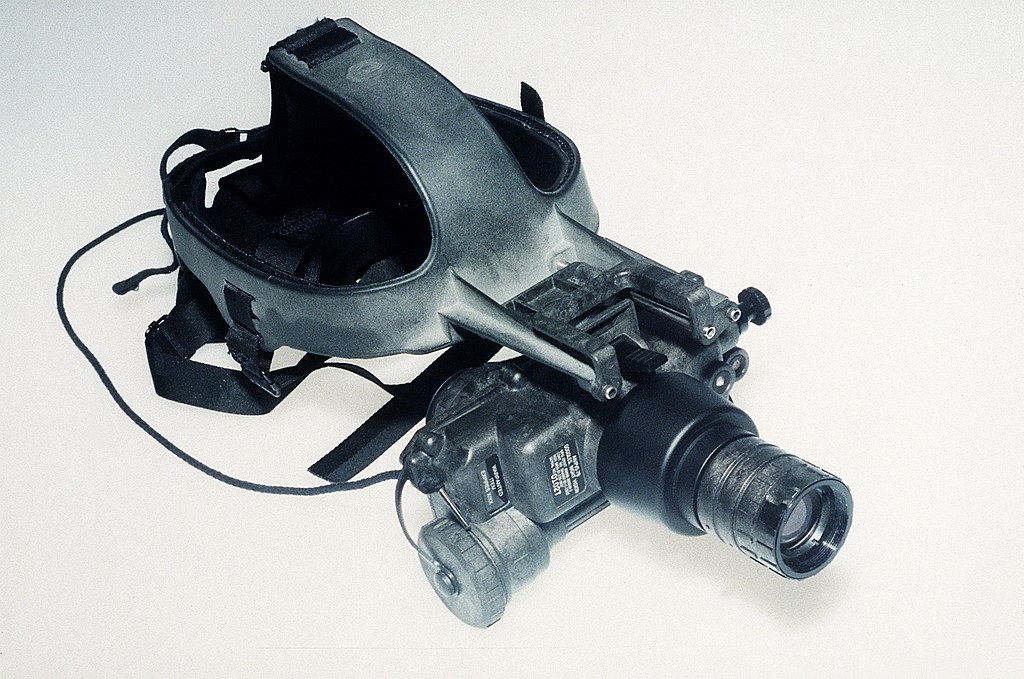Our eyes usually have a hard time seeing in the dark or during nighttime if there are no sources of light available. Without sight, we would most likely trip on an object or fall into a pit or hole. So, we need to be able to see through the dark so that we will remain safe indoors and outdoors.
If we don’t have a flashlight or other tools that can serve as sources of light, then the next best tool we should have is a pair of night vision goggles. Did you know the best night vision goggles can help people see over 1,000 yards away on a dark night? For instance, Africa at night is extremely difficult to spot or photograph wildlife in total darkness unless you have night vision devices.
What exactly are night vision goggles? And how can we get the pair that is the most suitable for our needs? We will know more about this particular piece of survival equipment as we take a look at the tips for buying the best night vision goggles.
What are Night Vision Goggles?
How Do They Work?
Night vision devices let you see in the dark. You can see people, animals, and things up to 1,000 yards distant at night with good night vision goggles and scopes. Night vision monocular cameras let you take photographs and videos of things you can’t see in the dark with your naked eyes.
Optoelectronic Image Enhancement
Optoelectronic image enhancement, which is used by traditional night vision devices, works by sensing small amounts of infrared light reflected off of objects and then electrically amplifying that light into a characteristic glowing green image.
This technology uses a series of optical lenses and a special electronic vacuum tube to capture and amplify the visible and infrared light that is reflected off nearby objects.
The objective lens, the system’s first lens, captures the dim visible light reflected from the subject along with some light from the low end of the infrared spectrum. Like all light, this light is comprised of tiny particles called photons.
These photons pass through the objective lens into an image-intensifier tube. This electronic vacuum tube powered by small AA or N-cell batteries, consist of two components.
The first part of the tube is called the photocathode. This component converts the incoming photons into electrons. These electrons flow into the second part of the vacuum tube, called the microchannel plate (MCP). The MCP is a thin glass disc with millions of microscopic holes that multiplies electrons and amplifies the electric signal thousands of times.
Why isn’t the image in this conventional night vision in color? It has to do with how the color information from the image is converted when photons are transformed into electrons, turning the original colorful light into a black-and-white image.
As the electrons exit the end of the image-intensifier tube they hit a phosphor-coated screen. The phosphors on the screen light up when hit, creating a glowing green image that is considerably brighter than the dim light that entered the objective lens. Through an ocular lens that allows you to concentrate and, if necessary, magnify the image, you see the phosphor image.
Digital Image Enhancement
Digital image enhancement is a more recent technology that uses a digital image sensor to capture available light before digitally enhancing the photos and displaying them in full color.
Night vision devices that use digital image enhancement are more compact, lightweight, and adaptable. With digital night vision, the light entering the objective lens is converted into a digital signal via a complementary metal-oxide-semiconductor (CMOS) sensor, like the ones used in digital video cameras.
The digital image is then enhanced electronically and magnified several times. The larger the CMOS sensor, the higher the resolution of the image you view. Many current digital night vision devices display and record full 1080p HD video and even reproduce color images instead of old-school glowing green images.
Types of Night Vision Devices
Night vision technology is used in several devices, all designed to enhance viewing in dark or low-light conditions. Scopes are the most common consumer product that makes use of night vision technology.
A scope is a telescopic sighting device used to view distant objects. Both freestanding (handheld) and mounted scopes are available for several types of firearms, like rifles. Both monocular (one eyepiece) and binocular (two eyepieces providing a stereoscopic view) night vision scopes are available.
Goggles for night vision are also popular. Think of these goggles as a binocular scope incorporated into a head strap or helmet. Goggles free up your hands for other tasks because they are worn rather than held. They are great for nighttime or indoor use in dimly lit spaces.
Finally, many still and video cameras incorporate digital night vision technology for shooting at night. Night vision cameras are often used for surveillance purposes, especially around a building’s unlit perimeter.
Factors to Consider When Choosing Night Vision Goggles
Generation of Night Vision Goggles
Image intensifier tubes today are divided into generations. They differ in terms of weight qualities and compactness, both of which are desirable. But the cost of a device made using this technology will be very significant.
Generation 1 Night Vision
Did you know that Generation 1 technology are developed in the the early 1960s? Moreover, generation 1 night vision is the most common technology sold. The popularity of this generation is because it is cheap night vision compared to Generation 2 and Generation 3 technology. With Generation 1 technology, a human can often see 75 to 100 yards, depending on the circumstances.
Generation 2 Night Vision
Generation 2 equipment is much closer in all aspects to Generation 3 than it is to Generation 1 technology. In fact, Generation 2 is often considered the best night vision for the money as it gives good performance but is reasonably priced compared to Gen 3 and Gen 4 units.
Most 2nd generation devices can perform well in low light without IR illumination. With Gen 2 technology, there is no partial image distortion, which is a problem with Gen 1 devices, giving the user a clearer, more usable field of view by around 30 to 40%. Depending on the condition and the quality of the equipment, Gen 2 night vision devices typically allow the user to see up to 200 yards or more.
Generation 3 Night Vision
The most advanced night vision technology is the Generation 3 Night Vision Scope. With this professional equipment, you can anticipate outstanding performance and an image tube life of at least 10,000 hours. The most significant innovation with the latest 3rd gen products is Pinnacle or Autogated image tubes.
This technology allows the device to function effectively in environments with excessive lighting, such as urban areas where light pollution from street lights, house lights, and other sources creates a bright halo effect that can completely cover the image. Most non-autogated devices will automatically shut off when the light sources are too bright to protect the picture tube, leaving the user in the dark.
State-of-the-art Gen 3 equipment is available and legal for US civilians to purchase and enjoy. More people than ever are starting to enjoy the wonders of what Gen 3 gear will allow them to experience.
Magnification and Field of View
Night vision goggles cannot enlarge an image like binoculars can. However, this is not necessarily a drawback, though. Magnification of 1x provides the widest possible field of view, which is frequently far more crucial.
Battery Life
Night vision goggles need their own source of electrical energy, which plays the role of chemical batteries, most often lithium. The longer the battery life, the less frequently you will have to change the batteries, and the less likely it is that your goggles will suddenly fail due to a failing power source.
Durability
The monocular’s demanding and tough exterior guarantees its long-term viability. Some night vision equipment is known for its toughness and unwavering build quality.
Also, consider the availability of a service center that serves your location/area when picking the device’s manufacturer.
Price
Correspond the cost of the device to the benefit it will bring. Consider the tasks that you intend to accomplish with your night vision goggles. Do not buy models that are too expensive for fun or cheap for serious work.
Reviews
There are many night vision goggles that are most convenient for long-term observation and situations. Some are suitable for hunters, military, police, rescuers, night nature researchers, speed bumpers, tourists and climbers. Whatever your needs are, it is also essential to read reviews and consider recommendations from person who already tried the device.
In conclusion, night vision goggles are ideal for all situations requiring extended observation. It has many benefits such as, improved visibility in darkness and safety while driving or walking at night.
Also, keep in mind, the more modern the converter design, the better the image quality and high optical performance can be expected from the goggles themselves.




